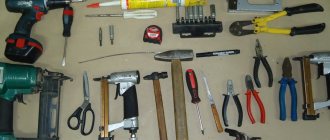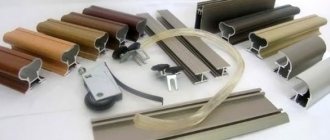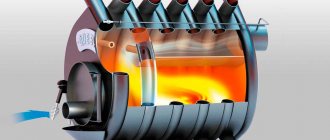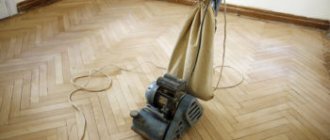Very often, when doing electrical installation work, it is impossible to do without a vacuum cleaner.
This is primarily due to the processes of wall gating. You cannot use homemade household models for this task, otherwise you will ruin them on the very first day of work. Their dust collectors will fill up very quickly, and the vacuum cleaner itself will overheat.
Only professional craftsmen who earn a daily living from this type of activity can afford to buy a construction equipment, which costs quite a lot of money.
But what if you are not a builder and you only need such a device to complete electrical repairs in your apartment? In this case, there is only one optimal solution - to make a construction vacuum cleaner yourself from an ordinary one.
Moreover, such a change will only take you a few minutes. And the materials that are required for this can be easily found in the pantry, or purchased in addition at the nearest plumbing store.
Let's take a closer look at two very similar methods, which nevertheless have structural differences between each other.
What is the difference between a construction vacuum cleaner and a regular one?
Conventional household models cannot serve as an alternative to industrial ones. To make a construction vacuum cleaner with your own hands, you need to heavily rework the device. Otherwise, there is a risk of constant oversaturation of the dust collector. In addition, the device will quickly break down.
Note! For normal operation of the product, you need to use components that create a significant vacuum at the input. The vacuum device is driven by a powerful motor.
Manufacturing companies
- The first company to start producing such devices is Vacuflo. They entered the market in 1956. This company is still the first among manufacturers of built-in vacuum cleaners.
- Beam is a brand of vacuum cleaners manufactured by Electrolux. They have been on the market since 1957 and appeared in Russia in 2000. Now there are more than a thousand dealers in the country and a developed service network.
- BVC mit SIEMENS motor is a brand of vacuum cleaners manufactured by BVC International in Germany. They have been on the market since 1988 and are exported to 21 countries (including Russia)
- Thomas is a company founded in 1900 in Germany. It also specializes in the production of washing vacuum cleaners.
These are the most common, but there are others: Disan from Italy, Puzer from Finland, Husky from Canada, Kronemark from Germany and Russia, SilentMaster from the United States of America.
Design Features
Homemade construction vacuum cleaners are characterized by certain design features.
Construction vacuum cleaner with water filter
The principle of operation of a device with a water filter is that the air flow with dust moves in a spiral and touches the surface of the water. Thus, the system additionally humidifies the air. Due to this, the dust becomes heavier and settles into the water.
A vacuum cleaner with an aqua filter can also be replaced by an ordinary household bucket, to which you need to attach the appropriate attachments. A barrel of suitable size is also suitable for this purpose.
Homemade chip sucker
This device helps to collect shavings that are constantly lying under your feet. To achieve a good result, you need to take a motor with a long shaft and a sheet of plywood. The motor must be powerful enough and have a speed of up to 3000.
Plywood is used to make an impeller, which is similar to a water mill. To avoid beating, it must be properly balanced.
To assemble the device, you must do the following:
- install the side of the case;
- place the impeller on the shaft;
- mount the top;
- install the second side panel.
Note! An additional container is required to collect chips. An ordinary box or bag is suitable for this.
Construction vacuum cleaner for cement dust
How to make a vacuum cleaner to collect construction waste? To collect cement dust, you need to use several high-quality filters. The fact is that it is extremely difficult to retain small fragments. In addition, they easily absorb moisture, acquiring a sticky consistency.
To make a high-quality device, you need to combine water and cyclone types in one. Sometimes a vacuum cleaner is added to a wall chaser.
In any case, the device must include the following:
- plastic cone;
- capacity;
- household vacuum cleaner.
Important! A synthetic mesh must be placed on the surface of the water layer. It will prevent liquid from spilling during operation of the device.
The device can be used to collect cement dust
Garden device
People with their own gardens periodically have to remove leaves and other debris. Garden devices are used for this. It's easy to make them yourself.
It is recommended to use an old Soviet vacuum cleaner as a basis. You need to install a plastic container in it and connect a wide corrugation, which has a dense piece of pipe at the other end.
It is noteworthy that among compatriots it is not customary to collect leaves with a vacuum cleaner. However, those who have already tried this option are completely delighted. With the help of a simple device, the speed of cleaning in the garden increases significantly.
You can make an effective device for the garden
What is it and what is it for?
Such a unit, of course, is not an essential item. It can be easily replaced with a regular household appliance, which costs many times less, but does a much worse job of cleaning.
A built-in vacuum cleaner is an incredibly powerful dust removal system whose central unit is installed outside the home . The most ordinary vacuum cleaner (even the most expensive and good one) blows out a stream of air, the degree of purification of which depends on the quality and condition of the installed filters. This air raises uncollected dust. A built-in vacuum cleaner does not create a similar situation, since the purified air goes outside the house.
This unit was loved by the owners of large multi-storey buildings. Having a central vacuum cleaner in your home, you no longer need to carry a heavy machine up the stairs, maneuver between furniture, get tangled in a long hose and look for a suitable outlet. To connect the device, you only need a built-in air socket, into which a long cable equipped with a special cleaning attachment is inserted.
Process of creation
Making homemade products depends on the available materials and tasks. In this case, different schemes can be used.
From improvised means
First of all, you need to make holes in the central part of the bucket lid and near the edge. Then you need to insert a tube into the center. However, first its edges must be processed with a file or sandpaper. This will help strengthen the adhesion of the surfaces. You should also prepare the lid. Then you need to lay the tube and apply glue.
When using a powerful vacuum cleaner, you should not use a plastic bucket, but a steel tank of a similar shape. Thanks to this, you don’t have to worry about the product being crushed.
From a household vacuum cleaner
Many craftsmen are interested in how to turn a regular vacuum cleaner into a construction one. To improve the properties of the device, you need to unscrew the wheels from it. Similar actions must be performed with the nameplate.
After removing all rivets and latches, you need to install the plug. To increase its reliability, it is necessary to wrap electrical tape and make a hole in the bottom. Its internal cross-section should be 3-4 cm. To seal the structure, you can use gaskets. You need to install a lid and a pipe in the waste container.
The cover must be secured with self-tapping screws. Then you can move on to working with the suction pipe. The hole into which it will be attached must be cut with metal scissors. Self-tapping screws can be used for fixation. To increase the tightness of the connection, gauze or a pharmaceutical bandage is suitable. Before winding, they should be soaked in glue.
An effective device can be made from a household vacuum cleaner
Principle of operation
In the walls of the house there are completely sealed pipelines, which on one side are connected to the central apparatus, on the other - they go out into the rooms in the form of special pneumatic sockets. The central apparatus itself is most often installed in places where it will not interfere. In private houses - in a boiler room, storage room, garage, in an ordinary apartment - on a balcony or loggia. A special hose is connected to the pneumatic outlet, at the end of which there is a cleaning nozzle. This hose differs from the hoses of conventional vacuum cleaners in only one thing - its length, which sometimes reaches 10 meters.
Thus, all the dust goes into the compartment, and the air that passes through the filters is thrown out onto the street, and not back into the apartment.
A built-in vacuum cleaner is a technique that will make cleaning simple and easy and will help you keep your home clean and tidy. The device copes perfectly not only with smooth floors, but also with carpets. Successfully removes dust mites, cleans all surfaces from waste products of guanine mites, which cause allergies in most people. Easily removes pet hair, cleans hard-to-reach places behind furniture and around baseboards.
The effectiveness of homemade compared to store-bought analogues
Homemade devices cannot be compared with professional ones. They differ in the following parameters:
- motor and suction power;
- noise parameters;
- volume of waste collection container;
- air purification;
- additional functions;
- hull strength.
At the same time, a simple homemade vacuum cleaner will easily clean the room from small shavings and construction dust. Home devices are smaller in size. They help free the floor and walls from dust. However, they do not have an air purification function.
The manufacture of a construction vacuum cleaner has a number of features. To get a high-quality and reliable design, you should think it through to the smallest detail and prepare everything you need.
Installation rules
The most suitable time to install a built-in vacuum cleaner is during the construction of a house or renovation of premises.
At this time, you can easily install the air duct system along with other utilities and install air inlets. And hide all this under the screed and disguise it as a fine finish.
But this does not mean that it is impossible to install such a device at another time. If you do not plan to carry out repair work, you will simply have to hide the air ducts under furniture, in plasterboard boxes, under the baseboard.
When planning the route of air ducts, it should be taken into account that the shorter the pipelines, the better the system works.
In this case, there should be as few transitions, elbows and tees as possible. All necessary turns must have sufficiently large radii.
To determine the need for pipes, it is necessary to draw an axonometric projection of the pneumatic system.
On the same diagram you will immediately see which fittings you will need and in what quantity. The diagram also determines the footage of the low-voltage cable and the number of fasteners
The main unit is usually mounted on brackets fixed to the wall. The width of the wall must be at least 600 mm.
For better cooling of the motor and ease of emptying the dust container, the minimum distance between the device and the floor should be 400 mm (with a plastic container) or 100 mm (with a paper dust container).
If the vacuum cleaner is installed in a room with a low ceiling (or in a closet), then the distance from the top of the unit to the ceiling must be at least 300 mm.
You will have to make holes in the bottom and top of the cabinet. Their total area must be at least 200 cm2 (one hundred square cm at the bottom and top). This is done to better cool the engine.
For a pneumatic system, it is better to purchase pipes with antistatic additives . Otherwise, dust will settle on the walls of the air ducts, which will lead to a gradual reduction in the cross-section of the pipes, or even to their complete clogging.
Particular attention should be paid to air inlets. Different models have different diameters of cleaning hose fittings and the location of electrical contacts.
The hose fitting must fit tightly into the socket. Otherwise, the suction power will be reduced. If the electrical contacts do not match, then you can forget about remote control of the system.
We think that you might find this article about HEPA filters for installation in a vacuum cleaner useful; it tells you what types of filters there are, what determines their price, and much more. We also recommend that you read the article about filters for Samsung vacuum cleaners, find out which ones are suitable, which ones are better, how much they cost and much more.
Advice from professionals
The process of creating a homemade construction vacuum cleaner, as can already be seen, is relatively simple. But there are some subtleties that you need to know. So, when installing an air purifier on an angle grinder, you need to use a casing. To make it, use an aluminum pan or a suitable plastic product. It is only important to properly calculate the depth of immersion of the cutting disc into the material being processed.
A slightly different approach is needed when preparing a homemade vacuum cleaner for a CNC woodworking machine. Since a lot of sawdust is generated, a capacious barrel (from 100 liters) is required. If there is no ready-made barrel with suitable dimensions, simply make a plywood frame filled with cellular polycarbonate. The separator body is made up of rings cut with a milling compass. Important: the rings must be made of plywood, not fiberboard.
Sources
- https://stroy-podskazka.ru/pylesosy/stroitelnye/svoimi-rukami/
- https://ChistyjDom.ru/pylesos/samodelki/delaem-stroitelnyj-pylesos-svoimi-rukami/
- https://domikelectrica.ru/2-sposoba-kak-sdelat-stroitelnyj-pylesos/
- https://kliningovyj-raj.ru/tehnika-i-sredstva/pylesos-svoimi-rukami/
- https://PyleSOS.tech/promyslennyj-pylesos-svoimi-rukami.html
- https://stroy-podskazka.ru/pylesosy/svoimi-rukami/
Safety precautions
When making your own device, you can purchase factory-type parts and spare parts to save time and effort. But when installing filters, it should be taken into account that HEPA filters are not suitable for a homemade device, since such products can trap small dust particles in the pores of the filter itself. All this leads to the filling of filters with debris, and, consequently, the suction power will gradually decrease. The filter will be impossible to clean, since it will be difficult to blow out the dust, and when washed off, a rotting process may occur. Bacteria can also develop and cause an unpleasant odor during operation.
Bag dust collector
The main part of a vacuum cleaner, of course, is the engine, but without a device for collecting sucked debris, any vacuum cleaner will turn into an ordinary compressor for pumping air. In such vacuum cleaners, garbage bags are divided into two main categories:
- Disposable, designed to collect garbage during cleaning, after which the entire bag with contents is thrown into the trash.
- Reusable, they also accumulate debris drawn in by the vacuum cleaner, but unlike the previous ones, they are equipped with devices for cleaning the reusable bag from collected debris.
A distinctive feature of disposable bags is that they are hygienic in terms of removing debris from the dust container. The person himself does not come into direct contact with the garbage; after the cleaning is completed, ideally the bag is simply removed from the grooves. In practice, housewives change such bags after a certain period of time or number of cleanings. Disposable paper bags hold trash much better than reusable fabric bags. Reusable vacuum cleaner bags are used much longer than disposable ones and do not require frequent spending of money on purchasing new bags. But they are also characterized by a number of disadvantages:
- Due to the porous structure of the material, the cells of the reusable bag dust collector allow finely dispersed dust fractions to pass through.
- They require periodic washing, since regular shaking of the bag does not provide a complete cleaning effect;
- If wet debris and liquid fractions are collected or the washed bag does not dry completely, fabric vacuum cleaner bags become breeding grounds for bacteria, mold or fungi.
- When cleaning a reusable bag, the dust and debris contained in it end up on your hands and in your respiratory tract.
Installation cost
Not everyone can install a built-in vacuum cleaner on their own. Most often, users turn to specialized organizations that can perform all the necessary design and installation work.
The cost of the complex of works depends on the complexity of installation and the amount of preparatory work.
Usually the price is calculated by a company specialist after he visits the site. But in general, prices for individual stages of work have already been established, and the majority of companies adhere to them.
- Installation of the main unit (working unit) – 6,000 rubles/piece;
- Installation of air inlets – 3000 RUR/piece.
- Installation of pneumatic scoop – 4000 RUR/piece.
- Standard installation of a pneumatic system for one socket – 9,000 rubles/piece.
- Commissioning works – 2000 rub./per one inlet.
How does a cyclone separator work?
Externally, a cyclone separator can be characterized as a cylindrical vessel, the lower part of which has a cone-shaped design. The upper part of the vessel contains two openings - inlet and outlet, through which the air flow enters and exits, respectively.
At the bottom of the vessel - along the edge of the conical part - there is also a hole through which the sifted (filtered) debris comes out.
One of the upper holes (inlet) is equipped with a channel, due to which the incoming air flow enters the cyclone along a tangential line.
Given the cylindrical shape of the structure, the incoming flow moves in a circle, creating a vortex effect. The resulting centrifugal force throws suspended particles contained in the flow to the periphery.
The other hole, the outlet, also has a channel, but located strictly perpendicular to the incoming channel.
Reusable bag
The scheme is the same as for a disposable bag. Just use thread instead of a stapler. And you can only use thick fabric! For reliability, sew in several lines. Instead of cardboard, take plastic and cut it with metal scissors. This way you will increase the strength of your product, and therefore extend its service life.
To avoid the need to regularly glue the plastic to the bag, attach Velcro to each part. At the right time, you can easily detach the filled bag from its plastic base and can begin emptying it of debris. It is better to sew the Velcro to the bag so that it does not come off during washing. You can glue the other side of the Velcro to the plastic.
Recommended articles:
Advice on how to make a filter for a vacuum cleaner with your own hands?
Models and types of vacuum cleaner bags: disposable, universal, reusable
Cleaning and repairing vacuum cleaner brushes
What material can you sew from?
For the dust collector you need to choose the right material. Disposable ones are made from paper or cheap synthetic fabrics. Paper is convenient because it is easy to make a bag out of it, and after cleaning it you just need to throw it away. Disposable dust collectors are convenient for collecting small household waste, as long as it is not wet. If the dust bag ruptures, the engine may become clogged.
A reusable vacuum cleaner bag is best made from synthetic fabric. It is better to take spunbond material. It allows air to pass through, but the pores are so small that particles of dust and debris cannot pass through. Therefore, it works as an additional filter. This fabric is durable, easy to wash and does not deform. Its density varies, for a bag it should be at least 80g/m2.
You can also use teak, which is a cushion fabric. It is also breathable, but durable and does not allow dust particles to pass through. You can make a dust collector from non-woven fabric, but you will have to fold it several times. Denim or corduroy can be used from dense materials, the main thing is that they allow air to pass through well.











